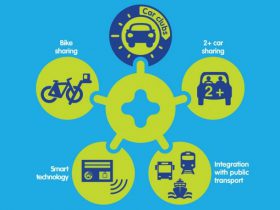If you think real estate is thrice obsessed with location (and it is), make room for geodata’s expanding role in payments, banking and a slew of related activities. The January 2021 Digital Consumer Onboarding Tracker® done in collaboration with Melissa informs on issues of the moment around how location data is making financial transactions safer and more accurate.
Saying location “is crucial to merchants, banks and service providers looking to reach customers in the digital age,” the Tracker adds that “maintaining accurate address information starts with onboarding and ends with ensuring that businesses have the most up-to-date information to tailor the final steps of delivery to their customers. Faulty data, on the other hand, can result in botched deliveries, inefficient operations and poor communication with customers.”
Faulty data. Sounds bad, but “terrible” may better describe it. “Failing to obtain accurate data and frustrating customers naturally leads to diminished sales. One study reported that 19 percent of failed deliveries are the result of erroneous address information. Such errors can cost companies hundreds of thousands of dollars annually, and large retailers report that annual charges can run into the millions if carriers must fix addresses to complete deliveries.”
Stakes are clearly high in the location accuracy game. The January 2021 Digital Consumer Onboarding Tracker® provides a focused view of how companies are getting it right.
Wherever You Go, There You Are
Geocoding relies on exact geophysical coordinates for a given address or location. Companies are using it more for logistical planning to fine-tune nettlesome “last mile” delivery snags for better customer experiences. Given the new prevalence of remote onboarding, collecting accurate address data is the point at which errors can begin, or be avoided entirely.
“Recent strides have been made in the use of geocoding technology, particularly in the financial and retail space. The precision and accuracy geocoding provides can open doors to even deeper insight when it comes to [firms’] customer data,” Bud Walker, chief strategy officer at Melissa, told PYMNTS.
Walker added, “Geocoding is useful for analytics: By plotting points on a map, businesses can identify segmentation patterns to more effectively target their customers. In addition, rooftop-level geocoding provides delivery-point accuracy. Giving retailers the ability to ‘put the pin’ in the customer’s driveway improves logistics and cuts down on shipping costs. Geocoding is also useful in risk assessment and fraud prevention. By developing purchasing behavior patterns, financial institutions can mitigate fraud by identifying unusual activity in a location that’s not typical of a specific customer.”
Address Verification Completes The Picture
Geocoding converts addresses to map points plus directions — indispensable in the delivery economy that’s grown exponentially since the pandemic hit. In new Tracker, Sunil Sharma, chief product and technology officer for Los Angeles-based online logistics marketplace Cargomatic, told PYMNTS, “Geocoding is a critical part of the plumbing, and final mile delivery would be incredibly hard to handle without it. Today’s shopper expects to know where their order is for every step of the shipment’s journey and expects proactive communication for any deviation.”
This comes in many forms, Sharma said, but location data has very precise applications. “Optimizing routes with geocoding can stop a delivery from being missed or delayed by sending an 18-wheeler into a small neighborhood, for example. The technology is expected not only to improve the economics for all parties but also to reduce delivery networks’ carbon footprints.”
Precision, then, becomes the merchant’s friend and ally. And precision is badly needed.
As Melissa’s Bud Walker told PYMNTS, “Since address databases are often full of errors, it can be challenging to match this data with actual coordinates. That’s why it’s important to work with an address verification expert as part of [a firm’s] geocoding initiatives to properly parse, correct and verify the physical address data. Once [firms] have that foundation of complete and accurate data, valuable demographics such as household income, credit information and more can be added, giving [firms] the insight [needed] for customer profiling.”
Link: https://www.pymnts.com/digital-onboarding/2021/precise-location-data-is-targeting-last-mile-delivery-demons/
Source: https://www.pymnts.com
















Leave a Reply